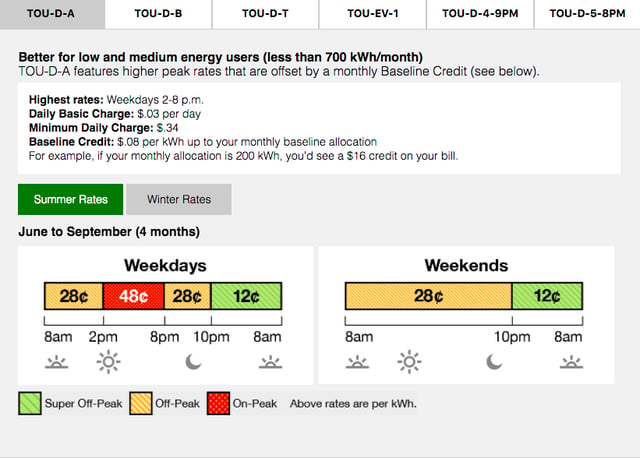

Get Ready For 2018 California Electric Rates Increase
Currently utility companies use fixed rate tiers, based on the total amount of energy used by a residential customer. So the total amount of power you use is the main thing that determines how much you pay. With the shift to Time of Use, customers will pay a different price for electricity based on what time of day they use electricity.
Tiered Rate Plan (Current)
In this plan, customers electric housholds start their billing cycle at the first Tier (1) rate, which is the lowest price per kilwatt hour. If the customer uses more energy than the specified baseline allocation for their region, the rate will climb to the next Tier (2). The highest Tier (3) rate applies if the customer uses more than 400% of the baseline allocation based region.Time-of-Use Rate Plans (2018)
Taking control of the energy consumption at home will help the customer to take advantage of the lower rates. Customers will pay a different price for energy they use between specific hours of the day. The idea is to allow a customer to control their bills over time. This is a lot harder than it sounds because habits like using the air conditioning all day, and doing laundry when we feel like it are hard to break. With Time Of Use billing, it will likely cost you more than you are paying today.. See rate details below:1.) TOU-D-A
This Time-of-Use rate is the best fit for low and medium energy users(less than 700 kWh/month)
Highest rates: Weekdays 2-8 p.m.
Daily Basic Charge: $.03 per day
Minimum Daily Charge: $.33

2.) TOU-D-B
This Time-of-Use rate is the best fit for high energy users (more than 700 kWh/month)
Highest rates: Weekdays 2-8 p.m.
Daily Basic Charge: $.53 per day
Minimum Daily Charge: None

3.) TOU-D-T
This Time-of-Use rate combines Time-Of-Use and Tiered Rate pricing.
Highest rates: Weekdays 12-6 p.m.
Daily Basic Charge: $.03 per day
Minimum Daily Charge: $.33
Given that our energy usage habits don’t always match up to our need for lower bills, going solar is by far the best solution to lower your bill and “lock in” your rates now for the future regardless of the rate changes by your utility. To find out exactly how much you will save by going solar, schedule your free in-home consultation with one of our energy experts today.
